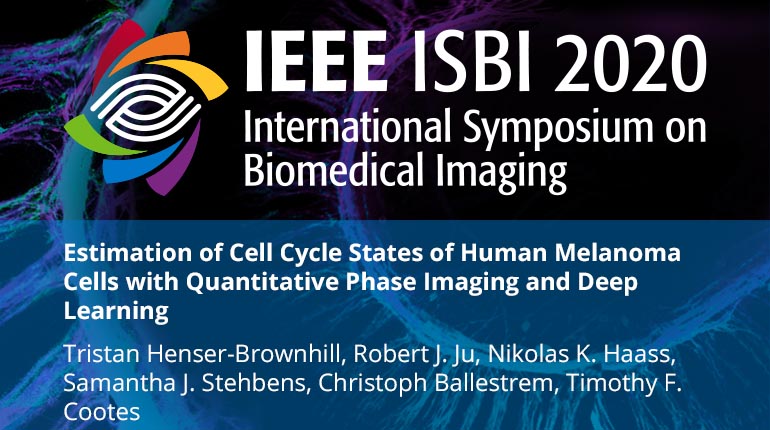
Already purchased this program?
Login to View
This video program is a part of the Premium package:
Estimation of Cell Cycle States of Human Melanoma Cells with Quantitative Phase Imaging and Deep Learning
- IEEE MemberUS $11.00
- Society MemberUS $0.00
- IEEE Student MemberUS $11.00
- Non-IEEE MemberUS $15.00
Estimation of Cell Cycle States of Human Melanoma Cells with Quantitative Phase Imaging and Deep Learning
Visualization and classification of cell cycle stages in live cells requires the introduction of transient or stably expressing fluorescent markers. This is not feasible for all cell types, and can be time consuming to implement. Labelling of living cells also has the potential to perturb normal cellular function. Here we describe a computational strategy to estimate core cell cycle stages without markers by taking advantage of features extracted from information-rich ptychographic time-lapse movies. We show that a deep-learning approach can estimate the cell cycle trajectories of individual human melanoma cells from short 3-frame (~23 minute) snapshots, and can identify cell cycle arrest induced by chemotherapeutic agents targeting melanoma driver mutations.
Visualization and classification of cell cycle stages in live cells requires the introduction of transient or stably expressing fluorescent markers. This is not feasible for all cell types, and can be time consuming to implement. Labelling of living cells also has the potential to perturb normal cellular function. Here we describe a computational strategy to estimate core cell cycle stages without markers by taking advantage of features extracted from information-rich ptychographic time-lapse movies. We show that a deep-learning approach can estimate the cell cycle trajectories of individual human melanoma cells from short 3-frame (~23 minute) snapshots, and can identify cell cycle arrest induced by chemotherapeutic agents targeting melanoma driver mutations.
 Cart
Cart Create Account
Create Account Sign In
Sign In





